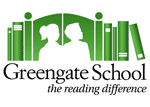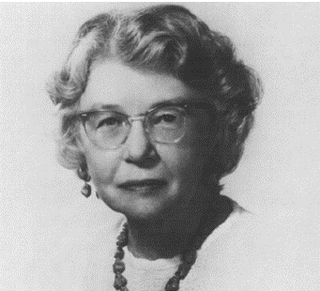Related Research Articles

Dyslexia, also known until the 1960s as word blindness, is a disorder characterized by reading below the expected level for one's age. Different people are affected to different degrees. Problems may include difficulties in spelling words, reading quickly, writing words, "sounding out" words in the head, pronouncing words when reading aloud and understanding what one reads. Often these difficulties are first noticed at school. The difficulties are involuntary, and people with this disorder have a normal desire to learn. People with dyslexia have higher rates of attention deficit hyperactivity disorder (ADHD), developmental language disorders, and difficulties with numbers.
Dysgraphia is a learning disability of written expression, which affects the ability to write, primarily handwriting, but also coherence. It is a specific learning disability (SLD) as well as a transcription disability, meaning that it is a writing disorder associated with impaired handwriting, orthographic coding and finger sequencing. It often overlaps with other learning disabilities and neurodevelopmental disorders such as speech impairment, attention deficit hyperactivity disorder (ADHD) or developmental coordination disorder (DCD).

The Orton-Gillingham approach is a multisensory phonics technique for remedial reading instruction developed in the early-20th century. It is practiced as a direct, explicit, cognitive, cumulative, and multi-sensory approach. While it is most commonly associated with teaching individuals with dyslexia, it is highly effective for all individuals learning to read, spell, and write. In the US, it is promoted by more than 15 commercial programs as well as several private schools for students with dyslexia and related learning disabilities.
Samuel Torrey Orton was an American physician who pioneered the study of learning disabilities. He examined the causes and treatment of dyslexia.

Fraser Academy, located in Vancouver, British Columbia, Canada, is a private, non-profit, co-educational, non-faith, non-residential school that serves children from grades 1 to 12 with language-based learning disabilities such as dyslexia. Its teaching methods are based on those found at the Kildonan School in New York, using the Orton-Gillingham approach. Besides daily individual tutoring for language, students take the same courses as other students in the province, in which courses a multisensory approach is also used.

Greengate School for Dyslexia is a private, non-profit school located in Huntsville, Madison County, Alabama. Established in 2002, Greengate School provides a full-time elementary program for children with dyslexia in Huntsville. Starting with three students in a church, Greengate had 32 students in 2006 and 19 teachers. The school has a 4:1 student teacher ratio and is a member of the International Dyslexia Association.

Management of dyslexia depends on a multiple of variables; there is no one specific strategy or set of strategies which will work for all who have dyslexia.
Anna Gillingham (1878–1963) was an educator and psychologist, known for her contributions to the Orton-Gillingham method for teaching children with dyslexia how to read.

Trident Academy is a school for children with diagnosed learning differences in Mount Pleasant, South Carolina.
This is a list of artistic depictions of dyslexia.
The history of dyslexia research spans from the late 1800s to the present.
Dyslexia is a reading disorder wherein an individual experiences trouble with reading. Individuals with dyslexia have normal levels of intelligence but can exhibit difficulties with spelling, reading fluency, pronunciation, "sounding out" words, writing out words, and reading comprehension. The neurological nature and underlying causes of dyslexia are an active area of research. However, some experts believe that the distinction of dyslexia as a separate reading disorder and therefore recognized disability is a topic of some controversy.

Dyslexia is a disorder characterized by problems with the visual notation of speech, which in most languages of European origin are problems with alphabet writing systems which have a phonetic construction. Examples of these issues can be problems speaking in full sentences, problems correctly articulating Rs and Ls as well as Ms and Ns, mixing up sounds in multi-syllabic words, problems of immature speech such as "wed and gween" instead of "red and green".

Sally Burwell Childs was a language training specialist, with an emphasis on furthering the research on dyslexia and educating dyslexic students. Childs, along with several colleagues, opened an organization to help create dyslexia awareness called The Orton Society, in 1949, and she held the position as vice-president from 1959 to 1965. She published several educational books for dyslexia and was recognized for her accomplishments in 1973 with the Samuel T. Orton Award.
Dr Hollis Scarborough is an American psychologist and literacy expert who is a senior scientist at Haskins Laboratories in New Haven, Connecticut. She has been a leading researcher in the area of reading acquisition since 1981, and has been involved with efforts to improve US national policy on the teaching of reading.
The Kildonan School was a private coeducational boarding and day school in Amenia, New York, for students with dyslexia and language-based learning disabilities. It offered daily one-to-one Orton-Gillingham language remediation and a college preparatory curriculum for students in grades 2-12 and PG (post-graduate).
The Windward School is a coeducational, independent day school focused on teaching students in grades 1-9 with language-based learning disabilities with campuses in Westchester and Manhattan. Windward is recognized across the country and around the world as a leader in providing instruction to children with dyslexia and is listed among the best schools in the New York City area.

Sally Shaywitz is an American physician-scientist who is the Audrey G. Ratner Professor in Learning Development at Yale University. She is the co-founder and co-director of the Yale Center for Dyslexia & Creativity. Her research provides the framework for modern understanding of dyslexia.
Margaret Byrd Rawson was an American educator, researcher and writer. She was an early leader in the field of dyslexia, conducting one of the longest-running studies of language disorders ever undertaken and publishing nine books on dyslexia.
Bessie Whitmore Stillman (1871-1947) was an educator and contributor to the Orton-Gillingham teaching method for students with disabilities in reading.
References
- ↑ "Beth Slingerland, 89, A Dyslexia Educator". The New York Times. 1989-03-25. Retrieved 13 March 2018.
- ↑ Slingerland, Beth. "Specific Language Disability Children, A Multi-Sensory Approach to Language Arts: A Guide for Primary Teachers". Research Gate. Retrieved 13 March 2018.
- 1 2 3 4 "Dyslexia method expert dies at age 89". The Hanford Sentinel. 1989-03-27. p. 4. Retrieved 2022-10-29.
- ↑ King, Lucinda (1981-11-07). "Punahou's dyslexia experts". The Honolulu Advertiser. p. 11. Retrieved 2022-10-29.
- ↑ "PTA work in schools". The Honolulu Advertiser. 1936-10-04. p. 27. Retrieved 2022-10-29.
- ↑ Sickler, Cletus (1987-06-24). "Language disabilities being studied". The Tennessean. p. 30. Retrieved 2022-10-29.
- ↑ "Slingerland screening tests for identifying children with specific language disability [kit] / Beth H. Slingerland". National Library of Australia. 1970. Retrieved 13 March 2018.
- ↑ Slingerland, Beth H. (1965). "Meeting the Needs of Dyslexic Children". Academic Therapy Quarterly. 1 (2): 66–113. doi:10.1177/105345126500100203. S2CID 145570018.
- ↑ Rafferty, Max (1981-02-25). "'Slingerland Method' revisited". Kitsap Sun. p. 44. Retrieved 2022-10-29.
- ↑ Hock, Sandy (1985-11-17). "Dyslexia: South Bay schools look to Slingerland class method". Imperial Beach Star-News. p. 7. Retrieved 2022-10-29.
- 1 2 "Teacher's work fights dyslexia". The Spokesman-Review. 1981-12-06. p. 58. Retrieved 2022-10-29.
- ↑ "S LINGERLAND S CREENING for IDENTIFYING CHILDREN with SPECIFIC LANGUAGE DISABILITY" (PDF). Charles Armstrong School. Retrieved 13 March 2018.
- ↑ Doyle, James J. (December 21, 1975). "Many pupils suffer dyslexia, may end up as delinquents - Newspapers.com". The Ogden Standard-Examiner. p. 20. Retrieved 2022-10-29.
- ↑ O'Gan, P. (2017, December 7). Eyewitness to a "Day of Infamy": Commemorating Pearl Harbor. Retrieved February 21, 2020, from https://americanhistory.si.edu/blog/eyewitness-pearl-harbor
- ↑ Slingerland, B. (n.d.). Letter. Retrieved February 21, 2020, from https://americanhistory.si.edu/collections/search/object/nmah_1764651
- ↑ "Award Recipients - International Dyslexia Association". dyslexiaida.org. 2014-08-12. Retrieved 2022-10-29.